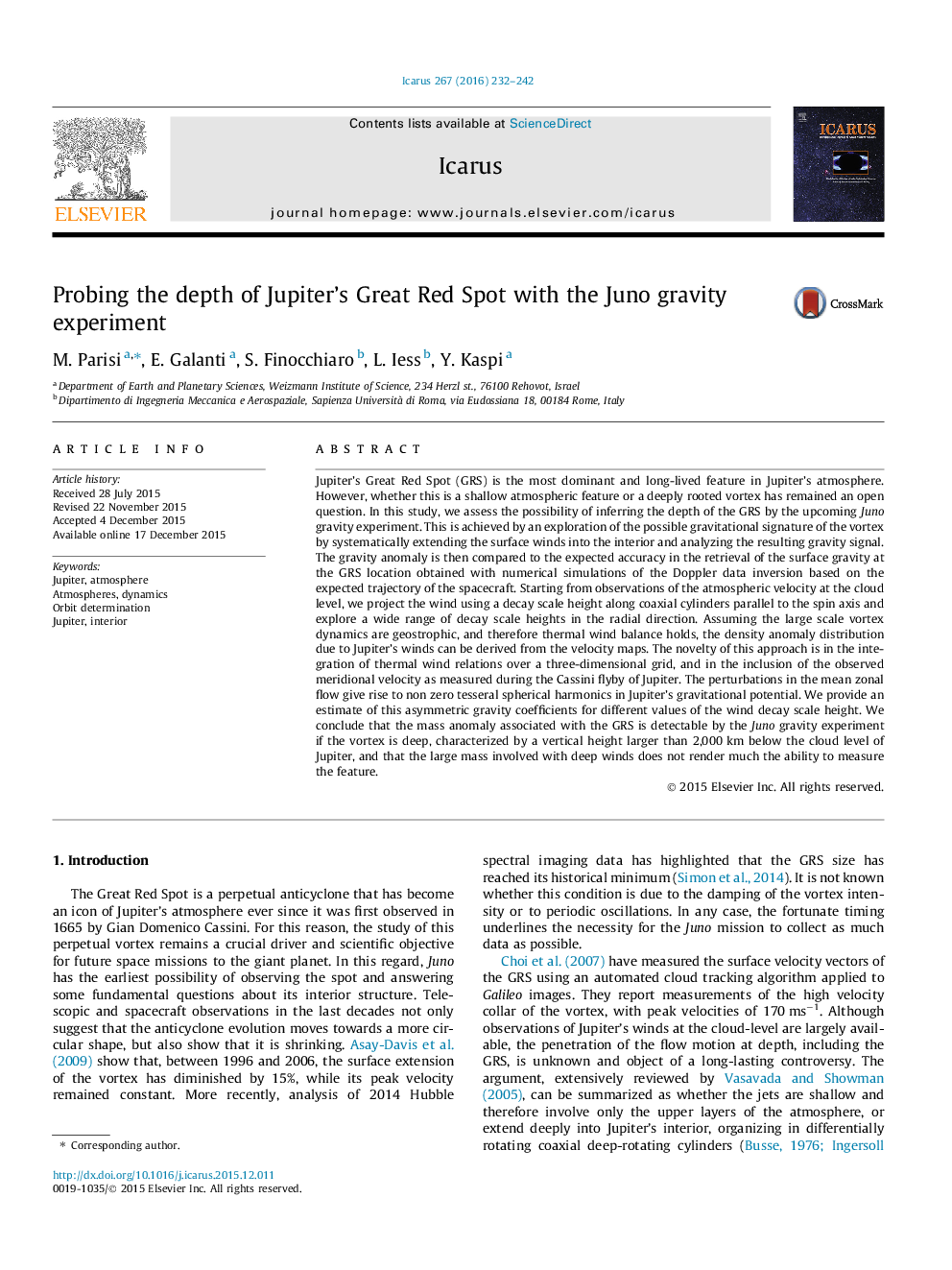| کد مقاله | کد نشریه | سال انتشار | مقاله انگلیسی | نسخه تمام متن |
|---|---|---|---|---|
| 8135700 | 1523523 | 2016 | 11 صفحه PDF | دانلود رایگان |
عنوان انگلیسی مقاله ISI
Probing the depth of Jupiter's Great Red Spot with the Juno gravity experiment
ترجمه فارسی عنوان
بررسی عمق نقطه سرخ بزرگ مشتری با آزمایش جاذبه یونو
دانلود مقاله + سفارش ترجمه
دانلود مقاله ISI انگلیسی
رایگان برای ایرانیان
کلمات کلیدی
مشتری، اتمسفر، محدوده، دینامیک، تعیین مدار، مشتری، داخلی،
موضوعات مرتبط
مهندسی و علوم پایه
علوم زمین و سیارات
علوم فضا و نجوم
چکیده انگلیسی
Jupiter's Great Red Spot (GRS) is the most dominant and long-lived feature in Jupiter's atmosphere. However, whether this is a shallow atmospheric feature or a deeply rooted vortex has remained an open question. In this study, we assess the possibility of inferring the depth of the GRS by the upcoming Juno gravity experiment. This is achieved by an exploration of the possible gravitational signature of the vortex by systematically extending the surface winds into the interior and analyzing the resulting gravity signal. The gravity anomaly is then compared to the expected accuracy in the retrieval of the surface gravity at the GRS location obtained with numerical simulations of the Doppler data inversion based on the expected trajectory of the spacecraft. Starting from observations of the atmospheric velocity at the cloud level, we project the wind using a decay scale height along coaxial cylinders parallel to the spin axis and explore a wide range of decay scale heights in the radial direction. Assuming the large scale vortex dynamics are geostrophic, and therefore thermal wind balance holds, the density anomaly distribution due to Jupiter's winds can be derived from the velocity maps. The novelty of this approach is in the integration of thermal wind relations over a three-dimensional grid, and in the inclusion of the observed meridional velocity as measured during the Cassini flyby of Jupiter. The perturbations in the mean zonal flow give rise to non zero tesseral spherical harmonics in Jupiter's gravitational potential. We provide an estimate of this asymmetric gravity coefficients for different values of the wind decay scale height. We conclude that the mass anomaly associated with the GRS is detectable by the Juno gravity experiment if the vortex is deep, characterized by a vertical height larger than 2,000 km below the cloud level of Jupiter, and that the large mass involved with deep winds does not render much the ability to measure the feature.
ناشر
Database: Elsevier - ScienceDirect (ساینس دایرکت)
Journal: Icarus - Volume 267, 15 March 2016, Pages 232-242
Journal: Icarus - Volume 267, 15 March 2016, Pages 232-242
نویسندگان
M. Parisi, E. Galanti, S. Finocchiaro, L. Iess, Y. Kaspi,
